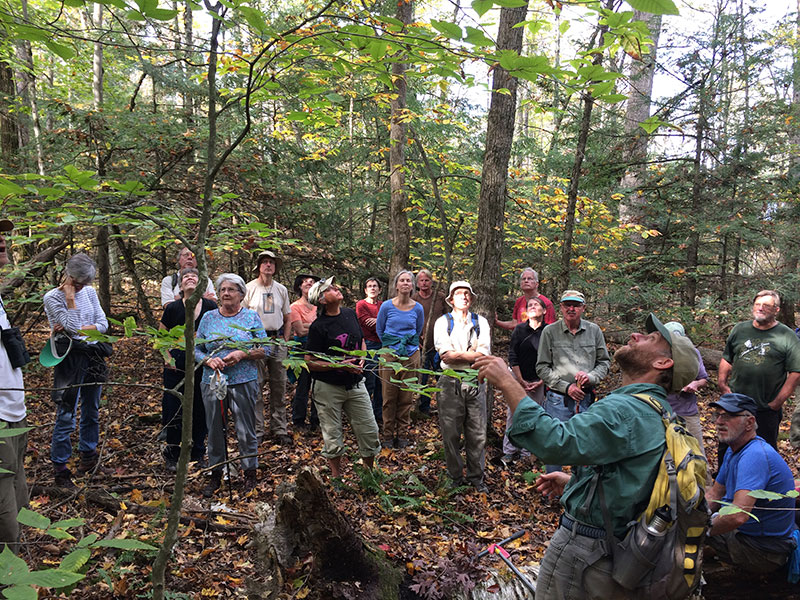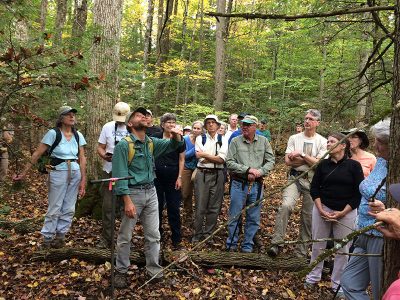The Cornwall Conservation Commission hosted a guided walk on Sunday, October 15 through one of Cornwall’s finest examples of a Valley Clayplain Forest on the Foote Farm property. Approximately 30 interested individuals from Cornwall and surrounding communities attended the event to learn about the site’s plants and soils and investigate the principles of landscape connectivity. Clayplain Forests, once common across the Champlain Valley, have declined in number due to agriculture and development and are now rare and listed as “threatened” in Vermont.
Marc Lapin, Environmental Studies Laboratory Professor at Middlebury College, guided the group and provided a fascinating explanation of the geologic timeline, characteristics of the native clay soil, diversity of tree species they have adapted and evolved over time. Lapin’s major interest is human interaction with nature and how various approaches or views of nature affect the ecology.
Dr. Ian Worley of Weybridge, retired Professor Emeritus of Environmental Studies and Plant Biology at UVM, attended the walk and added his observations and commentary as well.
This hemlock-hardwood forest abuts a rich wetland complex, all part of the Beaver Brook watershed, a major tributary of the Lemon Fair River. The approximately 20 acres of clayplain forest comprise part of the 112 acres of conserved greenspace on the 160 acre Foote Farm residential development, located off Route 125.

Listening and observing were key components of the forest walk, led by Marc Lapin, front right.

Marc Lapin, kneeling, used a soil auger to extract soil cores to explain the characteristics of a clayplain forest soil.

Primary tree species observed included hemlock, white and burr oaks, beech, white pine and basswood.
